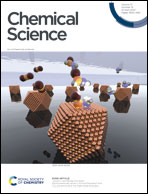Ni-catalyzed asymmetric hydrophosphinylation of conjugated enynes and mechanistic studies†
Abstract
The catalytic asymmetric synthesis of P-stereogenic phosphines is an efficient strategy to access structurally diverse chiral phosphines that could serve as organocatalysts and ligands to transition metals and motifs of antiviral drugs. Herein, we describe a Ni catalyzed highly regio and enantioselective hydrophosphinylation reaction of secondary phosphine oxides and enynes. This method afforded a plethora of alkenyl phosphine oxides which could serve as valuable precursors to bidentate ligands. A new type of mechanism was discovered by combined kinetic studies and density functional theory (DFT) calculations, which was opposed to the widely accepted Chalk–Harrod type mechanism. Notably, the alkene moiety which could serve as a directing group by coordinating with the Ni catalyst in the transition state, plays a vital role in determining the reactivity, regio and enantioselectivity.



 Please wait while we load your content...
Please wait while we load your content...